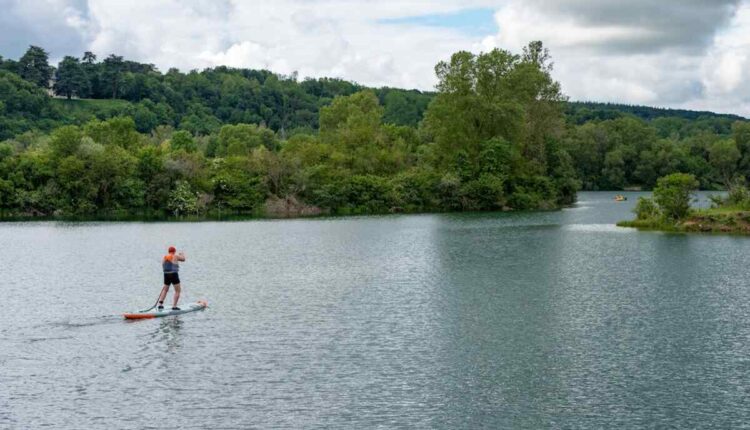Crater Lake is a town of 3,600 people with an old problem and a bit of a tarnish on its reputation, but it has a priceless asset, as the Mayor sees it. It has its own lake. But therein lies another problem -an ”over there problem” – and it is high time, the Mayor says, that something is done about it.
”This lake is going to hell,” says Mayor Gerald Waltrip, ”and nobody over there gives a damn.” Whenever he seeks assistance, he said the other day, Iowa officials react this way: ”The problem is, Mayor, you are over there.”
The trouble with Carter Lake, the town, as Mayor Waltrip sees it, is that it is a little piece of Iowa that got stranded in Nebraska in what is now Omaha. It is a waif of land and water that he says nobody wants to claim when help is needed.
The root of that problem is a century-old accident of nature. Back in 1877, when what is now the town of Carter Lake was a nub of Iowa thrusting into Nebraska, the city was embraced by an oxbow curve of the Missouri River. Then, a sudden shift in the channel bit off the nub, leaving it isolated in Nebraska along with a new lake in part of the old riverbed. The rest of Iowa was then on the other side of the Missouri.
The lake, a narrow, 3.5-mile arc, wraps around the upper half of the town, and most of the modest bungalows that house many of its people huddle between its long arms. The lake is a blessing for the thousands of people who love to boat, water ski, and fish on its waters.
But the lake is a capricious neighbor, sometimes rising and flooding basements, sometimes falling and leaving boats and docks high and dry. Each vacillation changes water tables and ground pressures and breaks sewer lines. That problem has now been aggravated by recent changes in drainage systems both in neighboring Omaha and at Omaha’s airport.
Ever since the river’s shift, Mayor Waltrip contends, the town of Carter Lake has been treated like an orphan. For the first half-century or so, it didn’t make much difference. The land was thinly populated.
Then, as growth came in the 1930s and 40s, a measure of benign neglect was just acceptable for the hoodlums and gamblers who found a haven here, beyond the reach of Nebraska laws and out of the way for most Iowa officers.
An earlier Mayor once boasted of encountering a Governor, an Attorney General of Nebraska, and a Mayor of Omaha at the Chez Paree, a Carter Lake gambling house of the 1940s. ”And I was proud to meet them there,” said Wilson E. Mabrey, who was Mayor then. After 1949, when Iowa state authorities finally closed the Chez Paree, other gambling clubs flourished briefly.
Though memories of the bad old days persist hereabouts, those activities were a thing of the past by the time Mr. Waltrip entered city government as a councilman in the early 1970s. And the principal lawlessness here now, he says, are violations of zoning codes that allow some eyesores, such as automobile salvage yards on the main business strip.
Now, from the point of view of several citizens, including the Rev. Art Matychuk, pastor of the Lakeside Bible Church, and Carrol Piercy, the ”Buddy” of Buddy’s Marina, Carter Lake’s fortunes would surely be on the mend if only the lake problems could be resolved.
”Business gets better every year,” says Mr. Piercy.
”I think Carter Lake is changing its image,” said Mr. Matychuk. ”Five years from now, there will be only a few old people who will still talk about the bad old days.”
But now, the folks here in Carter Lake contend that it is essential that somebody do something about the lake. Mr. Waltrip argued that it would only take the state to return some of the town’s tax dollars in aid.
An intergovernmental task force has proposed a pumping system that would draw water from the river when the lake is low and pump it back to the river when the lake water rises. However, such a project would cost about $840,000. Mr. Waltrip has proposed sharing the costs with other authorities, with the Army Corps of Engineers paying the most.
A spokesman said the Corps is studying the proposal, but Iowa’s Natural Resources Commission has already rejected its share of the costs. ”It’s a good design, it’s a good proposal, and it’s necessary,” said Michael Carrier, administrator of the commission’s parks, recreation and preserves division. But, he added, its execution is a local responsibility.
Read also: Mahalakshmi Tours And Travels.


